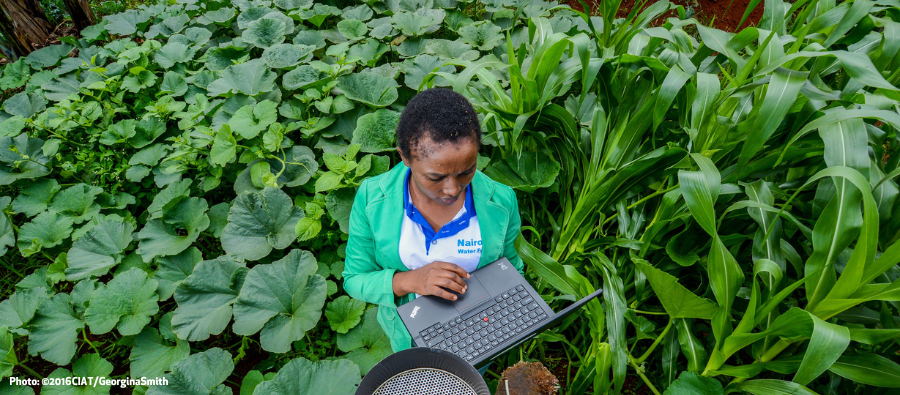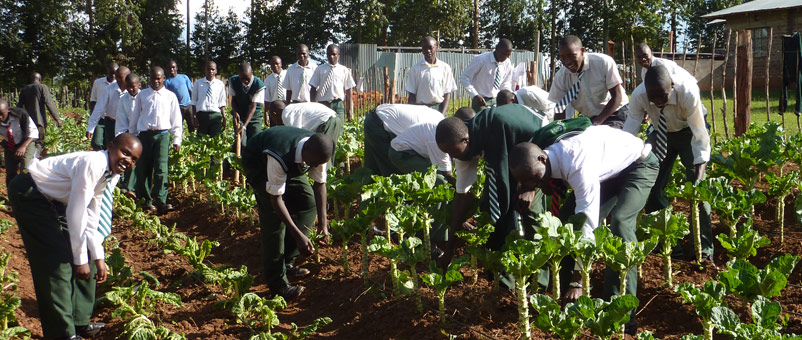Dr. Racine Ly, Director, Department of Data Management, Digital Products, and Technology, AKADEMIYA2063, discusses how the emerging technology revolution is helping Africa’s farmers build resilience through innovative crop production predictions.
From climate change and conflicts to health crises, plant disease, and pest outbreaks, Africa’s food production systems are constantly battling numerous threats. Countering these shocks would require accessible data and quality evidence, not only for Africa’s smallholder farmers but equally for its policymakers.
But we are witnessing a breakthrough – a suite of emerging technologies is increasingly making vital data – from weather conditions, the spread of pests and diseases, and more – more available, accessible, and applicable for Africa’s farmers.
Moreover, new technologies are also promising to not only fill the continent’s traditional ‘agricultural data gap’, but also help farmers get ahead of the curve by predicting future agricultural production. Such tools would help African farmers navigate the unknowns of future climate, conflict, and pest and disease challenges, before their full impact is felt on food production systems.
Africa Agriculture Watch (AAgWa), recently launched as the fourth core program of pan-African research non-profit AKADEMIYA2063, is one such tool revolutionizing how Africa’s farmers plan and navigate production challenges.
The web-based platform equips farmers with the data and analytics needed to prepare for shocks, crucially, before they even arrive. Predictability is a key element in times of crisis, and AAgWa is making such information available to help mitigate the ongoing ‘poly-crisis’ era faced by the agricultural sector.
AAgWa, through its Africa Crop Production (AfCP) model, collects remotely sensed data through satellite images to make predictions of agricultural production for nine key crops across 47 African countries.
This includes both globally traded commodities like maize and wheat, as well as smallholder staples such as cassava and sorghum. The latter are especially important in rural areas, particularly vulnerable to disruptions that severely impact livelihoods and food security.
The state-of-the-art AAgWa platform thus leverages emerging technologies to boost the productivity of African smallholder farmers, while providing evidence to agricultural policymakers in several key areas.
To begin with, the platform helps generate more and better data by collecting remotely sensed satellite imagery, to improve the policymaking process in the agricultural sector. AAgWa’s data allows decision-makers to anticipate, before the harvesting period in African countries, the most likely scenario in terms of agricultural production.
This imagery can provide a wide range of information, from predicted crop production quantities, estimated future yields, and trend-analysis of geo-biophysical parameters such as land surface temperature, rainfall, vegetation indices, among others. All of these factors are key to crop growth and provide actors on the ground with much more valuable information to make effective predictions regarding food production.
Secondly, the AAgWa platform also uses machine-learning to sift through this vast amount of collected data. Ultimately, data is worthless without the capacity to translate it into actionable information, which would otherwise exclude smallholder farmers, for example, from its benefits.
For this reason, the AAgWa platform makes use of cutting-edge machine-learning techniques to transform the raw data, such as that collected from satellite imagery, into knowledge which can benefit farmers on the ground.
Beyond the granular visualization aspect, the data collected by AAgWa are not just snapshots of the current crop growing conditions only, but also information about what to expect in terms of production quantities, weeks before the harvesting periods, helping farmers get ahead of potential challenges or obstacles.
Finally, the AAgWa platform, crucially, provides data that is relevant to, and actionable by, the continent’s often marginalized smallholder farmers. Smallholder farmers make up at least 60 percent of Africa’s total population, yet too often lack access to vital data to meet the rising challenges to their agricultural production and overall livelihoods.
To address this imbalance, the AAgWa platform provides food crop production quantities predictions for some of the most important smallholder crops in Africa – such as cassava, sorghum, and others – on an open-access online platform. This not only ensures that smallholders can leverage this data for more resilient and efficient production, but that policymakers are able to drive further agricultural productivity across a wide variety of crops.
The AAgWa platform is just one example in a growing set of tools that promises to disrupt how African farmers prepare for and meet future challenges to agricultural production and continental food security.
With the rising impact of climate change, as well as ongoing supply chain disruptions from conflicts and the lingering impacts of the COVID-19 pandemic, and the spread of harmful crop pests and diseases, the emerging technology revolution underway across the African continent could not have arrived at a more opportune time.
It is now up to decision-makers across the continent to fully exploit this data to achieve more effective and impactful interventions in agricultural production which can help build a food-secure continent.



